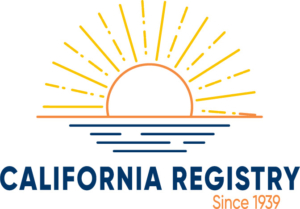Recognizing, Preventing, and Taking Action
Elder abuse is a growing concern across communities, yet it often goes unnoticed and unreported. If you’re worried about the safety or well-being of an older adult, understanding the warning signs and knowing what steps to take can make all the difference.
What Is Elder Abuse?
Elder abuse refers to any intentional or negligent act that causes harm or risk of harm to an older adult. This abuse can take many forms:
- Physical abuse – hitting, slapping, or improper use of restraints or medications
- Emotional or psychological abuse – verbal threats, isolation, intimidation, or humiliation
- Financial exploitation – misuse of an elder’s money, property, or assets
- Neglect – failure to provide necessary care, including food, hygiene, shelter, or medical treatment
How Common Is Elder Abuse?
While it is difficult to determine exact numbers, research estimates that between 4% and 10% of older adults in the United States are victims of some form of abuse. However, the true scope of the problem is likely far greater.
Elder abuse is significantly underreported, often due to:
- Fear of retaliation or abandonment
- Embarrassment or loyalty to the abuser (especially if it’s a family member)
- Fear of being institutionalized
- Physical or cognitive impairments that prevent speaking out
How to Recognize the Warning Signs
Elder abuse can be subtle or overt. The following signs—grouped by abuse type—can help you assess whether an older adult may be in danger:
Physical Abuse
- Unexplained injuries such as bruises, burns, or fractures
- Fearfulness or flinching around certain individuals
- Conflicting explanations for injuries
- Sedation, disorientation, or unusual drowsiness (potential medication misuse)
Psychological or Emotional Abuse
- Withdrawal from family, friends, or normal activities
- Sudden changes in mood or behavior
- Reluctance to speak openly, especially around a caregiver
- Verbal belittling, threats, or controlling behavior from others
Financial Exploitation
- Unpaid bills despite sufficient income
- Sudden changes in financial documents or legal arrangements (e.g., power of attorney, wills)
- Missing possessions or funds
- Unusual banking activity or ATM withdrawals
- Contributions to household expenses that seem excessive
Neglect
- Poor hygiene or signs of malnutrition
- Untreated medical conditions or lack of necessary aids (glasses, hearing aids, walkers)
- Dirty or unsafe living conditions
- Social or emotional isolation
- Caregivers who seem disinterested or unengaged
What Should You Do If You Suspect Elder Abuse?
Take action—don’t wait. If you believe an elder is being mistreated, neglected, or exploited, there are confidential resources available to help.
Here’s how you can help:
- Call the police if you believe someone is in immediate danger.
- Report the abuse to Adult Protective Services (APS) in your county.
- Contact your local Area Agency on Aging for support and referrals.
- Call the National Eldercare Locator Hotline at 1-800-992-1660. This free, toll-free service will connect you with local agencies that can provide immediate assistance.
Everyone Deserves to Age with Dignity and Safety
Abuse can happen in families, institutions, or caregiving relationships. Speaking up could protect a vulnerable senior and ensure they receive the care and respect they deserve. Whether you’re a concerned neighbor, friend, family member, or caregiver—your voice matters.
How our FREE service works
Our family-first process will help you find the right senior living community for your loved one.
Connect with an expert senior living advisor
Review a personalized list of communities
Tour sites and finalize the placement
Do You Need to Find Care Right Away?
Our Senior Living Advisors can help with:
- Hospital discharge
- Rehab Facility discharge
- Alzheimer’s & Dementia care


